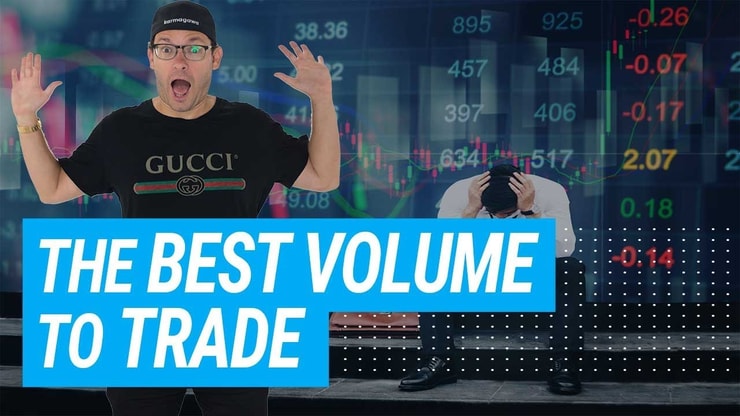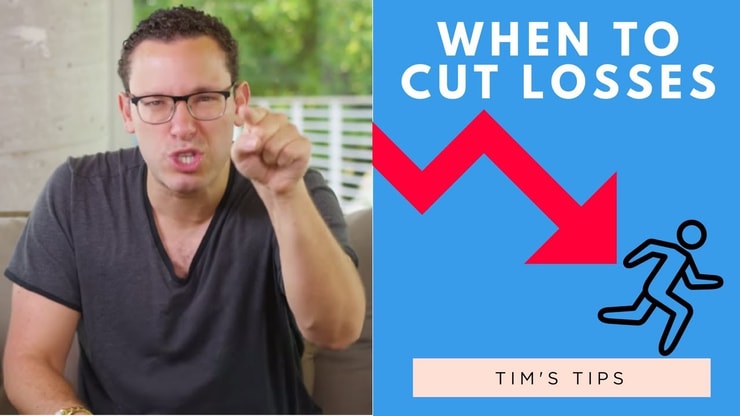What if instead of trading harder, you trade smarter?
Trading doesn’t have to be extremely complicated, and I believe that it can be accessible to anyone. But it does require a lot of hard work and time: slaving over spreadsheets, monitoring charts, and doing research.
But why work any harder than you need to?
By honing your techniques and streamlining your processes, you can start to trade more intelligently and efficiently.
In this post, I’ll give you nine simple ways to help you trade smarter, so you can maximize your time and your trading opportunities.
Table of Contents
- 1 What Do I Mean By Trade Smarter?
- 2 How to Trade Smarter in 9 Steps
- 2.1 #1 Trade Only Patterns You Master
- 2.2 #2 Never Trade Without a Stock Screener
- 2.3 StocksToTrade Key Features
- 2.4 #3 High-volume Stocks Are a Must
- 2.5 #4 Follow News Catalysts
- 2.6 #5 Keep a Trading Journal
- 2.7 #6 Don’t Use Leverage
- 2.8 #7 Never Follow Stock Promoters
- 2.9 #8 Cut Your Losses Quickly
- 2.10 #9 Master Your Skills with Seasoned Mentors
- 3 The Bottom Line
What Do I Mean By Trade Smarter?
You’ve probably heard the phrase “work smarter, not harder.” When I say, “trade smarter,” I’m proposing that you take this tactic with trading, too.
This means being smart about your time and research. It’s using the tools at your disposal so that you can learn to be more efficient in everything you do as a trader.
Benefits of Having the Right Trading Mindset
The right mindset can give you a boost in any endeavor — trading included. Here are some benefits to getting into a smart state of mind as a trader:
Cultivating better habits. When you commit to trading smarter, you’re forced to be aware of your own habits and tendencies. You need to observe yourself to refine what’s working and to cut out what’s not. Focus on developing your good habits and kiss the bad ones goodbye.
Maximizing your time. Your time is precious and valuable, so find ways to polish and even automate some of your processes as a trader. Maximizing your time can help free you from the chains of the computer screen.
Staying calm. Do you make smart decisions when you’re stressed out or in a panic? Not usually. But when you’re in the right mindset, you’re better primed to make intelligent trading decisions.
Find your Zen zone. You’re less likely to make rash decisions spurred on by emotions. This can help you keep your cool and stick to your trading plan. Over time, this can have a positive impact on your trading career.
How to Trade Smarter in 9 Steps

Here are my top nine tips to trading smarter. Every tip is easy to incorporate into your routine … but don’t think that just because it’s easy it doesn’t matter. Every one of these tips can have a positive impact on your trading.
#1 Trade Only Patterns You Master
One of the biggest mistakes that new traders make is that they try to go in too many directions at once.
If you know anything about me, you know I’m all about education. As a newbie, you definitely should educate yourself on all sorts of stock patterns. But focus on actively trading with only one or two setups at a time.
This is a smart way to improve your skills. And over time, you’ll try more and different setups.
When you narrow your focus on just a few trading strategies, you can master them, know them inside and out. But if you take on too many, it can be confusing and difficult to keep track.
Here’s another aspect of this tip: keep it simple. Don’t just look for any pattern — watch for the clean and easy ones. Some chart patterns are complicated. Why bother with those when there are plenty of clear, easily identifiable patterns?
Patterns like these aren’t complicated. They should be so clean that even a non-trader could look at them and see the basic pattern.
Examples of My Favorite Patterns
Need some help getting started? Here are some of my personal favorite patterns …
Morning Panics
A morning panic, as the name implies, is a big bout of panic selling that occurs right when the market opens for the day. A few traders start jumping ship, which leads to a panic. Before you know it, everyone wants out of their position.
It might seem like it follows no rhyme or reason … but take a step back. It’s actually a pretty clean pattern. The price dips, then moves up based on the flurry of activity, and then continues on the downtrend.
Of course, it’s important to be able to differentiate between a stock that’s making a big move and one that’s following an obvious morning panic. Check out this video I made to teach you all about morning panics — my single favorite pattern.
Breakouts
Here’s another of my go-to patterns: the breakout. This is one of my favorite ways to make the most of an emerging trend.
A breakout is pretty much exactly what it sounds like. A stock’s price catapults out of its support and resistance levels with increased volume. Once the stock breaks through these levels, people take note, and the volatility increases. This can cause the price to fluctuate quickly — either up or down.
No matter which way the price is moving, there can be trading opportunities here. If the stock price breaks resistance, you can take a long position. If the stock price goes below support, you can take a short position.
The idea here is to learn how to take advantage of the volatility increase.
#2 Never Trade Without a Stock Screener
Do you use a stock screener? These days, the top trading platforms come with built-in screener software. Yes, you still have to do some work, but you can automate a lot of it to create watchlists.
A stock screener is ultimately a time-saving and efficiency tool. It can be hard to find information on stocks, but using a screener can make it easier.
StocksToTrade Key Features
Hands down, StocksToTrade is my favorite stock screener and trading platform. Here are some of the ways it can help you trade smarter …
Scan for Percentage Gainers
A screener can alert you to which stocks are on the move, both up and down. You can use percentage gainers (and losers) to start filtering potential stocks for your watchlist.
Now, of course, you should never make trading decisions based on percentage gains alone. Scanning for percentage gainers is just one of your first steps toward narrowing down your watchlist. Build your case based on other facts, too.
Scan for Daily Highs
One of the things I look for when I’m trying to find stocks that have breakout potential is a new daily high. It’s important to be able to show intraday trading ranges — the price range between the day’s low and the day’s high. A stock screener is one of the best ways to make this determination.
If you notice the stock has a new daily high and it’s combined with a catalyst and good volume, the stock might keep running once it breaks that key level.
Scan for News
Low-priced stocks can live or die based on news. So a criteria-based news search is an extremely handy tool.
You can set filters on the STT news streamer for the stocks you’re monitoring. This means you’ll get instant alerts for news events — like earnings announcements or breaking news — that might affect your watchlist stocks.
It used to be that you had to subscribe to various news outlets to get all of this information. Now, it’s all in your screener!
Scan for Your Favorite Setups
The majority of my best trades come from just a handful of strategies. Those strategies work for me, so that’s what I focus on.
And, yep, this is another key way to use a stock screener: Set up custom screens that can help you find your favorite setups. Think of it as your personal strategy scan.
#3 High-volume Stocks Are a Must
Let’s say you spot a trend that looks rock solid. You put together a ton of evidence in favor of your trade via your stock screener.
Should you make the trade? Maybe. Maybe not.
Before you do anything, you’ve got to consider the stock’s volume, too.
In trading, volume refers to how many shares of a stock are changing hands on a daily basis — including buying and selling. This number can have a big effect on a stock’s liquidity, which is super important when you’re trying to enter or exit a trade.
Volume should be considered with another key indicator: volatility.
Volatility is a measure of how fast a stock’s price moves up and down. Quicker movements mean more volatility for the stock.
Low-priced stocks tend to be more volatile than higher-priced stocks. This is because the companies are less established than large-cap companies or mega-cap companies. They might not be as proven, or they might be in emerging fields.
Volatility can make stock prices spike quickly and in ways that can sometimes be frightening, but it’s a necessary aspect of trading low-priced stocks. The volatility that scares off some traders is the very same thing that can swing the price and potentially net profits for other traders.
So, yes, you may want a stock with volatility, but you don’t want to take a position with that stock unless it has enough volume. Insufficient volume means that not enough people are buying and selling shares to keep things moving smoothly in the market.
So what does that mean you if you take a position? If there’s not enough volume, you may not be able to exit your position in a timely manner or when you planned. And every minute that you’re stuck in a trade can make a big difference …
Always check that there’s sufficient volume for moving in and out of a trade.
#4 Follow News Catalysts
A news catalyst is anything that can affect the stock price, including:
- News events. Sometimes local or global events can have a direct impact on stock prices. For example, in recent months there’s been a lot of buzz about CBD since the 2018 Farm Bill passed, making it legal to grow industrial hemp in the U.S. This is a great example of a news event that moved stock prices. Following the news of the Farm Bill, companies in the CBD sector blew up in anticipation of greater production and the potential for a bigger audience. Of course, negative news can be a catalyst, too. If a company is mired in scandal, for example, it can be a signal of the stock price’s likely fall. Always keep track of the news — you never know when you might stumble upon a story or event that might inspire you to look at new stock sectors.
- Company earnings. After each quarter closes, publicly traded companies are obligated to release earnings reports. These reports can have a massive effect on stock prices, so traders are always looking for opportunities during earnings season. Yep, it’s almost like a sport. Each quarter, a company has projections for its potential earnings. If the company exceeds the earnings, the stock price can move up as everyone tries to jump in on a promising enterprise. But if a company reports earnings that don’t meet the expectations and for no clear reason, the stock price can decline.
- Business deals. Wheeling and dealing can also move a ticker’s price action. For example, right now a lot of traders are excited about the future opportunities that might come with the next wave of 5G wireless technology. Unlike 3G and 4G technology, 5G will work on shorter yet more powerful wavelengths. It also means a new infrastructure of antennas. Hypothetically, if an antenna-making company were to sign a contract with a big carrier like Verizon, it could have a big effect on the antenna company’s stock price. Bottom line: If you’re following a company or a sector, watch for major business deals along these lines.
- Company changes. A company’s inner workings can influence the stock’s price. For example, if a key employee leaves the company under suspect conditions, it can drive the price down. On the flip side, a hot new hire could be a very good thing. If an emerging soft drink manufacturer were to hire a former executive from Pepsi or Coca-Cola, the promise of new prowess might inspire optimism. As a result, the stock price can tick up.
#5 Keep a Trading Journal

Dear Diary, how was your trading day? A trading journal might sound hokey, but suck it up — it can improve your trading.
The key goals of a trading journal are to monitor your actions and your emotions.
In your journal, you include the facts about a trade: the time, the ticker, when you entered and exited, whether you went long or short, how the stock performed, and what kind of research and catalysts played into the trade.
You also want include notes on how your state of mind. Trading is a mental game. It’s vital to keep track of your thoughts and emotions during the trade so that you can continue to improve your trading psychology.
Over time, monitoring both your factual approach and your emotional levels can reveal things that can help you streamline your trading. For example, say that every time you took a short position in the last month, you stressed out and exited too early.
Observe your actions and how your emotions might play into your decisions. Use that knowledge to make changes to your process.
It can also inform you about what’s working and what isn’t. Maybe you’ll learn that longer positions better fit your trading style. Whatever the cue, this can be an opportunity to fine-tune your approach.
A lot of traders think they’ll remember all these details — but they often don’t. So keep a journal. Make notes in it every day, even if you don’t make a trade. You might be amazed at what it reveals.
#6 Don’t Use Leverage
Fact: I don’t like leverage trading.
In the stock market, leverage trading is when you borrow shares from your broker to take a bigger position in a trade with the hope that your profits will be higher later on. Leverage trading happens all the time with options trading, futures, and buying on margin.
Let’s talk a little bit more about that last one. Buying on margin basically means that you’re taking out a loan to finance your position. It’s like you place a down payment but borrow the rest of the shares.
Here’s the problem: If a trade doesn’t work out as you anticipated, you can find yourself in a financial hole — you still have to pay back the borrowed amount. So I really don’t think it’s a good habit to get into, especially if you have a small account.
Instead, focus on building your knowledge base by making smaller trades. Even if you start out with a very small account, you can learn by taking small profits and increasing your position over time.*
This is, in my opinion, a better approach. You can actually gain experience in learning how the market works and gain more confidence in your trades. So by the time you’re ready to trade with more capital, you can have a better understanding of what you’re doing.
#7 Never Follow Stock Promoters
Repeat after me: Stock promoters aren’t looking out for your best interest.
Listen, I’m not saying that stock promoters are evil people. I’m sure they have plenty of good traits and do a lot of good for the world. But when it comes to promoting stocks, don’t take anyone at their word.
Why? There are just too many unknowns. You don’t know why the promoter has an interest in the stock. You have no idea what their goals are.
Additionally, if an opportunity really were as searingly hot as they say, you and hundreds of people who also got this “tip” could be jumping on the same boat. Sure, it could work out, but you have to do your due diligence.
Never make any trade on someone else’s word. You can listen to what they say. You can get ideas from others, but don’t make any final decisions until you do your own recon.
Look for news catalysts, look at the company’s chart, and consider their fundamentals. All this research might take time, but these are good habits for every single trade.
#8 Cut Your Losses Quickly
My long-term goal is to profit from trading. However, when I enter a trade, I’m not specifically thinking about profits. What I really focus on is minimizing my losses.
In the heat of a trade, it’s too easy to get emotional and make bad decisions. One example is the hold-and-hope mentality. That’s where, against your better judgment, you stay in a position because you’re certain that things will turn around.
Hey, it could happen. But more often than not, it doesn’t, and your losses mount. This is the stuff that separates long-term traders from the many newbies who blow up their accounts and ultimately give up.
You have to get smart about cutting your losses early on in your trading career.
This is a big part of why your trading plan is so important …
Your trading plan is where you map out every detail your trades. It can include why you decided to take a position (fundamentals, technical research, a pattern that suits your criteria, etc.), and what you hope to gain. It’s also where you determine your entry and exit points … before you make the trade.
Your entry point is usually easy to act on — it’s exciting to get into a trade. However, you need to be just as disciplined when it comes to acting on your exit strategy. There should actually be two plotted exit points: the best case scenario (when to take profits) and the worst case scenario (when to cut losses).*
If things are going well, you should determine where you’ll be happy exiting the trade. If you hold on too long, it’s possible that the trend could reverse.
You also need to have a plan for what to do if the trend reverses and things don’t go as you expected. At what point will you exit? Write it in 50-point type if you need to and stay true to your stop.
If you’re really disciplined, this can be a mental stop. However, if you think you’ll waver, set up a stop order so that you’ll stick to it.
#9 Master Your Skills with Seasoned Mentors
It’s possible to teach yourself almost anything — a foreign language, how to play the guitar, or how to rock climb.
However, it’s far easier to get the hang of any of these things if you take a few lessons with a professional before trying to take it on alone.
After all, someone who’s been through it and knows how to do it can teach you the ropes. A pro can guide you through the necessary basics and give you tips on how to continue refining your techniques.
Trading is the same. You can teach yourself how to trade, but you might have many missteps along the way. And that can potentially cost you a lot of money. Losing is discouraging, and it leads many would-be traders to quit.
Why waste time and lose money when you could seek out seasoned mentors and speed up your learning curve?
My Trading Challenge was created to fill in a gaping hole in trading education. I had so many traders reaching out to me for tips and tricks that I finally decided to create a curriculum to teach traders what I learned the hard way.
By joining my Challenge, you’ll get an education on the basics. But that’s only the beginning. The market moves fast, so a lot of my teaching is live — I can tailor it to the market as it is day by day.
It comes with features like a DVD library, but it also includes live trading sessions every Wednesday morning, live lessons every Wednesday evening, and live trading and/or webinars with some of my top students like Mark Croock and Tim Grittani.
Ultimately, the goal of my Trading Challenge is to help you become a self-sufficient trader so that you can trade smarter!
The Bottom Line
Trading will always require a lot of research and hard work. But trading smarter means finding ways to streamline your process and spend less time spinning your wheels.
Start building better habits today. Your routines, research, and practices can determine what kind of trader you are. And there’s no reason you can’t improve. There are a ton of resources available to you.
Find a mentor. Keep a trading journal and track what’s working for you. Work to continually improve and refine over time so that your trading routine can run like a well-oiled machine.
Trading will always demand time and effort, but you can maximize your time and efforts with the tips detailed in this post!
What does trading smarter mean to you? What are your go-to smart trading strategies? Leave a comment and let me know!









Leave a reply